- Solutions
ENTERPRISE SOLUTIONS
Infuse new product development with real-time intelligenceEnable the continuous optimization of direct materials sourcingOptimize quote responses to increase margins.DIGITAL CUSTOMER ENGAGEMENT
Drive your procurement strategy with predictive commodity forecasts.Gain visibility into design and sourcing activity on a global scale.Reach a worldwide network of electronics industry professionals.SOLUTIONS FOR
Smarter decisions start with a better BOMRethink your approach to strategic sourcingExecute powerful strategies faster than ever - Industries

Compare your last six months of component costs to market and contracted pricing.

- Platform
- Why Supplyframe
- Resources
CES in Las Vegas is one of the best places to get a pulse on the state of global electronics. With verticals like medtech, automotive, consumer electronics, and more on show, there’s truly something for everyone. After skipping the last two years due to COVID-19 concerns, I rejoined the masses in January 2023 to discover what’s on the horizon.
As an industry professional, I entered CES 2023 with certain expectations based on my research and experience in the last several years, including my last trip to CES in 2020. What I didn’t expect, and what inspired this story, is that many of those expectations were turned on their head. Whether you attended the show yourself, or are curious about what’s happening in our industry, read on to discover some intriguing trends.
Expectation: CES 2023 Won’t Turn Heads With its Attendance After a Slow 2022
It’s no secret that last year’s CES was a slow one. The show saw a massive 70% drop in attendance compared to the prior show in 2020. The show was entirely virtual in 2021, so it was interesting to see that things didn’t bounce back immediately.
But why would they? COVID-19 is still a factor, and in January of 2022, new surges were happening all over the world. Given this, I expected this year’s show to be another slow one, or at the very least, not quite a return to form.
The reality is that CES 2023 was indeed a return to form, more so than anyone expected. With over 115,000 in attendance and 3200 exhibitors, it certainly felt like a true industry showcase as I wandered the halls of the Las Vegas Convention Center.
“CES 2023 was the great reconnection and rocked by every measure – From attendance to the keynote stage to press conferences and product debuts on the show floor – showing the entire world that in-person events are BACK!”
– Gary Shapiro, president and CEO of the Consumer Technology Association
Some of the major exhibitors that were not present in 2022 also returned this year. The event hosted 2.2 million square feet of exhibits, which is actually a 70% increase from CES 2022. I went into the show with certain expectations around digital health, automotive, sustainability, immersive technology, and the metaverse, among others.
Expectation: VR, AR, and The Metaverse Have an Expiration Date
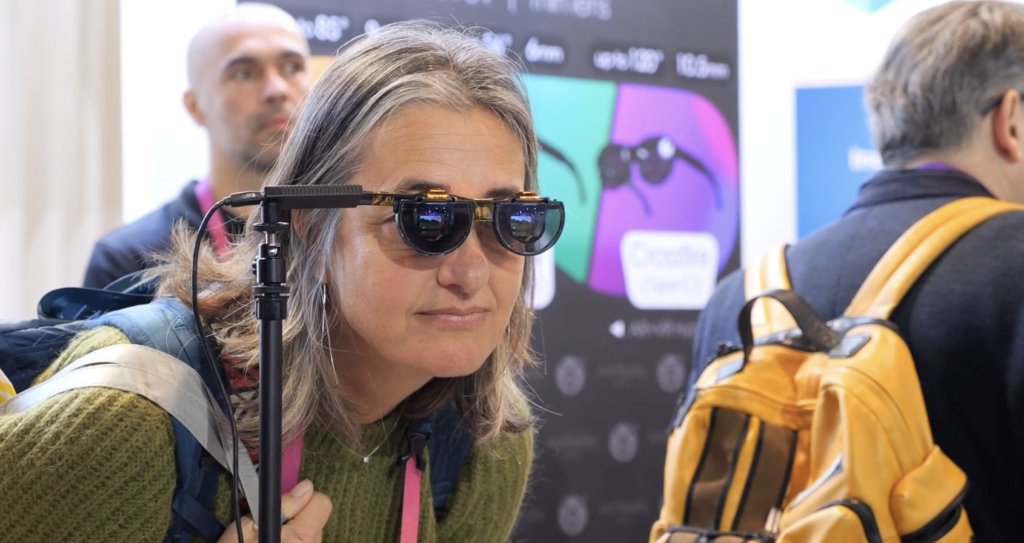
Immersive technologies like virtual reality, augmented reality, and the metaverse have been around for some time, but the expectation here is that many of these things are relegated to the realm of gaming and consumer tech.
Some have even claimed that technology like VR is on its way out, but that wasn’t the story I saw at CES 2023. As someone who enjoys immersive technology, I was shocked to see it make the leap from the world of gaming and into new industries like medtech.
The use cases for the technology also expanded immensely. One example was a company called Healium who were showcasing an app at their booth called Sleepium. This app uses a consumer-grade VR headset and a wearable EEG headband to measure brainwave data and present you with a virtual environment that encourages a meditative state and helps with quality of sleep.
Another example of VR entering medtech is a CES Innovation Award nominee called Heru, which utilizes VR technology to offer eye exams, nine different kinds in fact.
Remember AR glasses? Google Glass was among the first to showcase this technology, but that project it seems was ahead of its time. New companies like Vuzix and Lumus showcased the next generation of AR glasses and the technology has come a long way since Google Glass in 2013.
These devices can pair with your smartphone and display information on the lenses as you’re going about your day. It’s a great way to stay aware of what’s happening without having to turn your focus away from what you’re doing.
Yet another example of VR breaking out of its normal boundaries is Holoride, a company that offers VR in cars. A great way to pass the time or get some work done, but anyone who has used a headset will know that it could run into issues surrounding motion sickness.
So, what does all this mean for the metaverse? The concept of the metaverse simply envisions a virtual community where people can meet, work, and play in a digital world. Pieces of this vision are coming together, both at CES and elsewhere in our industry. Meta in particular has showcased some intriguing concepts with virtual workspaces and even a keyboard you can interact with thanks to hand tracking technology.
Virtual meeting rooms are also becoming a reality, but this is just the surface. In the space of electronics manufacturing, we’re also seeing the industrial metaverse becoming more and more popular. The use cases are numerous, but much of it is driven by the value that digital twin technology offers for everything from prototyping to maintenance.
Like any technology, these things have ups and downs, and while the potential is always there for it to fade into obscurity, don’t believe every article you read on how the metaverse is crumbling. As it turns out, immersive tech and the metaverse may very well be on the cusp of thriving in 2023.
Expectation: Component Shortages are Still a Major Challenge
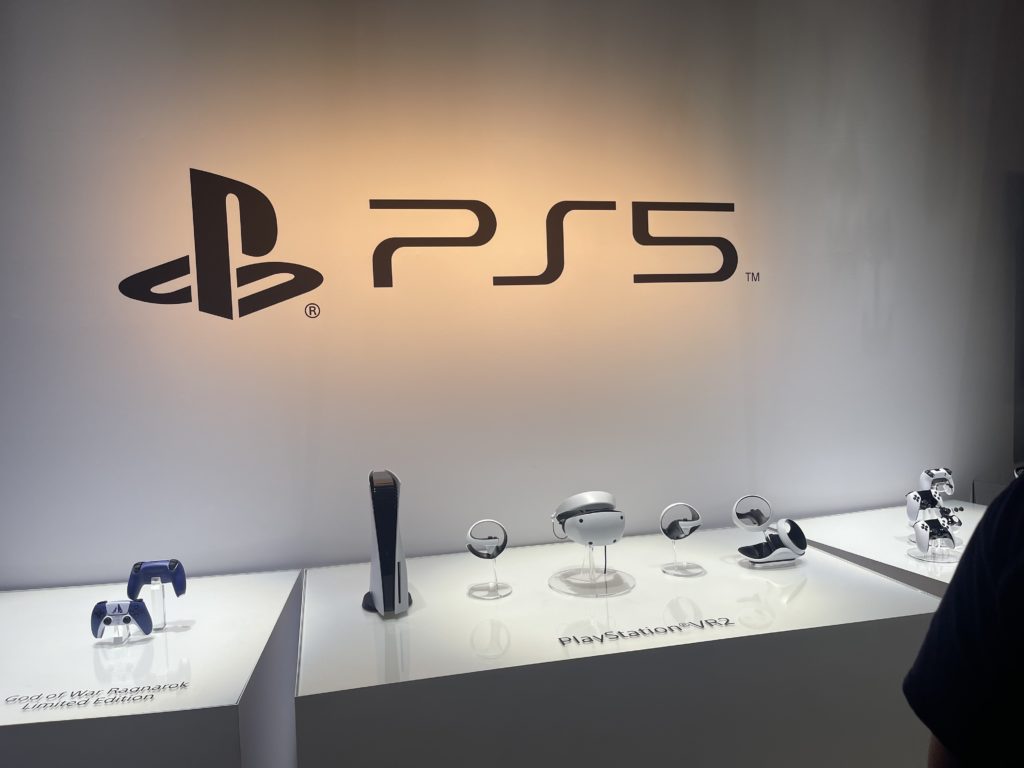
We’ve been talking about the ongoing component shortages here at Supplyframe for over two years now, and while things are getting better, our own data from Commodity IQ indicates we won’t see true relief until the midpoint of 2023.
Coming back to CES this year, I expected to see or hear about how the shortages continue to affect production and stock of the hottest electronics.
My expectations were rattled when I saw the sheer number of devices launching quite soon in 2023, but the true moment that shattered my expectations came from a press conference.
Now, we all know the PlayStation 5 has garnered a reputation for being notoriously hard to find in stock. This is due to the component shortages leaving the manufacturer unable to meet demand.
Knowing this, it was a shock during Sony’s press conference at CES 2023 when PlayStation’s head, Jim Ryan, declared on stage that the PS5 shortage is over moving forward.
He went on to thank fans for bearing with Sony while they “managed unprecedented demand amid global challenges over the past two years,” but this is the first major sign that component shortages may in fact be alleviating, and it’s a welcome one.
Expectation: Medical Devices Will Continue to Focus on Wearables
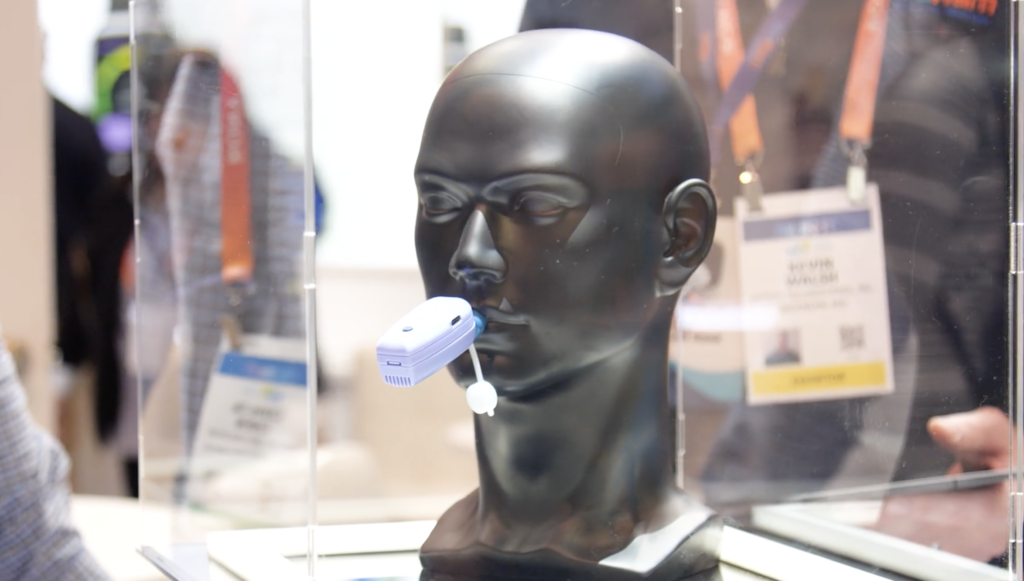
When we think about wearables, our first thought is always a Fit Bit or some other type of smart watch. In fact, watches seem to be the most prevalent form factor for these types of devices. I expected to visit the medical devices area of CES and find all manner of variations on this trend, but instead I was treated to some truly novel approaches and designs.
One such example is Valencell, who were showing off a cuffless and calibration-free blood pressure monitoring device. It can measure this metric from a person’s finger in less than a minute, without the need for traditional equipment, and transmits the data via bluetooth to an accompanying app.
In a combination I was not expecting, Abys Medical combines medical technology with the metaverse in a solution aptly named Surgiverse. This cloud-based 3D solution with holographic assistance allows surgeons to plan and execute procedures more efficiently. Physicians can create electronic patient files using digital twins modeled from medical imaging like a CT scan.
The digital twin can also be manipulated in 3D space using a mixed reality system like what Microsoft offers with the HoloLens 2.
Lastly, I was intrigued to see a new trend of digital hearing aids that are garnering a lot of attention. Nuheara announced the launch of its HP Hearing PRO hearing aid, which has been cleared by the FDA. Perhaps the most interesting aspect of these are the fact that they resemble wireless earbuds.
Expectation: Automotive Will Continue to Focus Safety and Autonomy
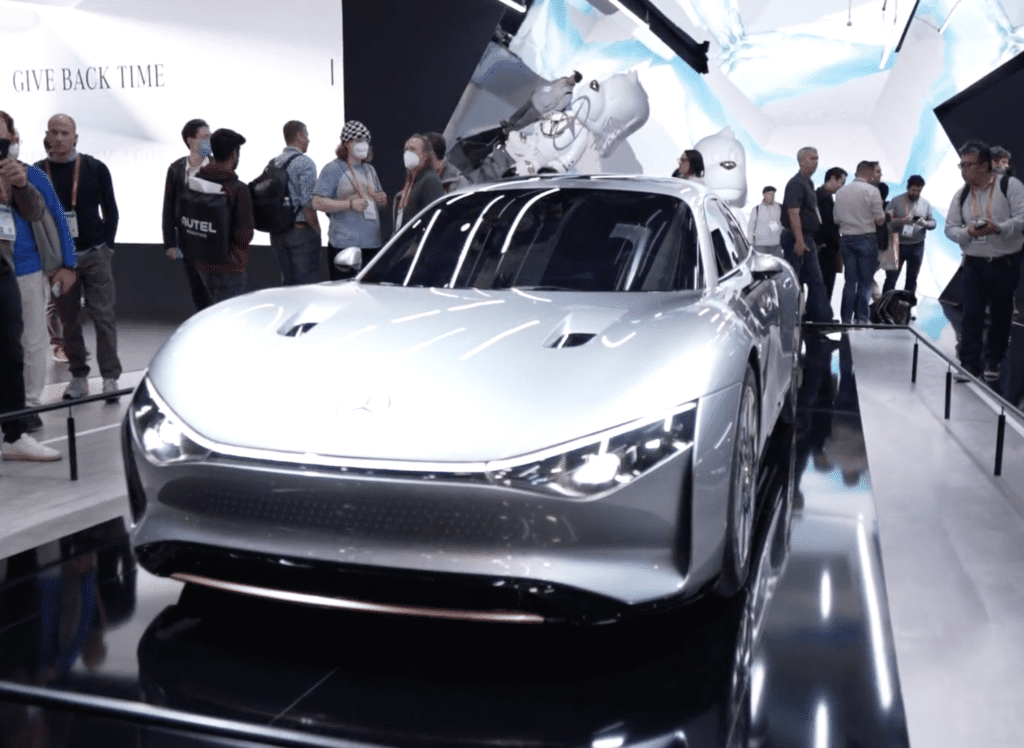
The wide range of concept cars and cutting-edge designs at CES make automotive one of the most appealing reasons to attend the show. Not just personal vehicles either, the show also plays host to other types of mobility and even concepts for public transportation.
My expectation here was that the general message would remain similar to 2020, which is a focus on safety as we move towards an autonomous future.
That was absolutely present at this year’s event, but some other trends I didn’t expect also stood out.
Electric vehicle designs have finally made the leap to bikes, courtesy of VinFast, who also showed off electric SUV designs at their booth. The designs were eye-catching and an indicator that EVs are branching off from standard car designs for consumers.
One of the standouts here was the fact that Qualcomm had a major focus on automotive at their booth, including one of the best concept car designs at the show. The focus here was the Snapdragon Ride Platform, which uses similar technology to the one Qualcomm uses in their smartphone solutions.
This new family of SoCs is described as the “first scalable family of SoCs to support digital cockpit and advanced driver assistance systems.” Bringing both the hardware and software into a single platform is an exciting proposition to be sure, and it will be interesting to see how this trend accelerates new automotive technology.
The other major surprise in the automotive space was the ongoing shift towards connected services in today’s vehicles. We’ve seen some aspects of this, including subscription models for features like heated seats, but the shift seems to be happening more widely than expected.
Sony, for example, announced their own vehicle called the Afeela, which they are making in partnership with Honda. Among the standard features, the vehicle offers level 3 autonomous driving, which doesn’t require the driver at all times.
The entertainment aspect of the car is what drew my attention. Sony announced a partnership with Epic Games to provide new entertainment possibilities via the metaverse. This is just one example of how car companies are treating their designs more like connected services than ever before.
Expectation: 5G and Connectivity Won’t Address The Digital Divide
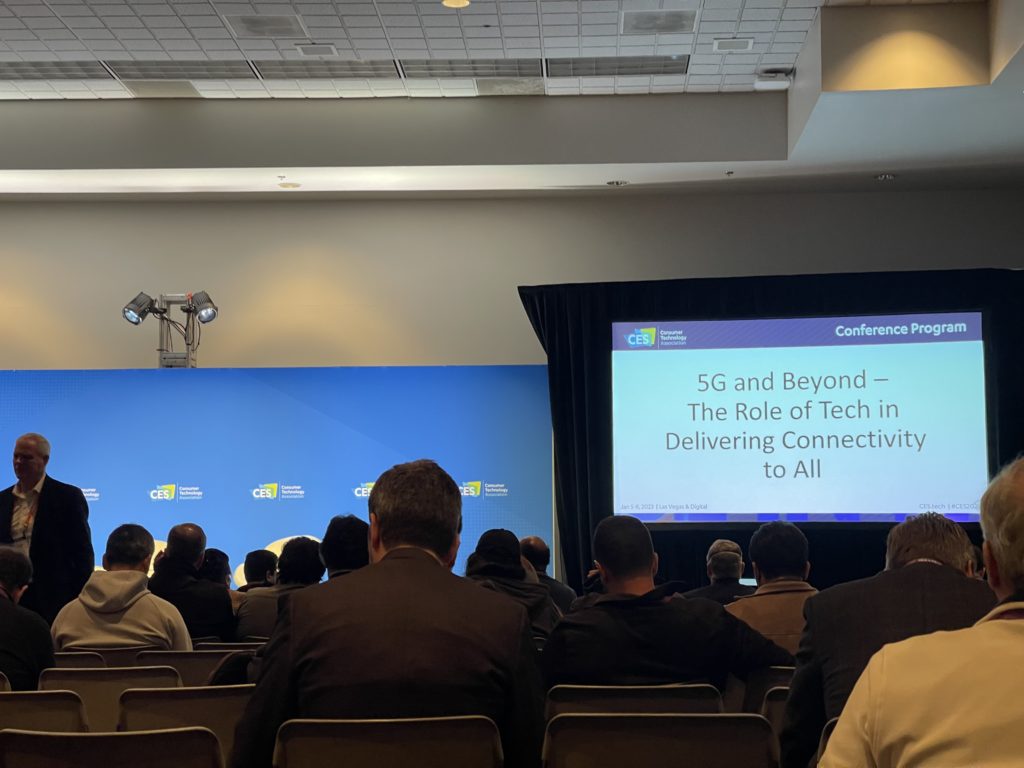
Wandering the halls of the Las Vegas Convention Center, it’s not hard to find connected devices. In fact, I would argue that just about everything on the show floor has some level of connectivity, whether it’s to a local network or the internet itself.
The problem arises when we stop to think about the state of internet availability in the U.S., let alone the world at large.
How can people truly take advantage of these leaps in technology (or the career opportunities they create) if they cannot even access basic broadband? This problem is known as the “digital divide,” and it’s a significant one. As of 2022, there are over 42 million Americans without access to broadband internet. To be perfectly frank, I didn’t expect the digital divide to be a major focus at CES 2023.
My expectations here were challenged quite nicely during a talk entitled “5G and Beyond – The Role of Tech in Delivering Connectivity to All.” This panel discussion brought together several leaders from major technology firms at CES, but also included representatives from the U.S. government at both a federal and state level.
The talk began with remarks from Alan Davidson, Assistant Secretary of Commerce for Communications and Information at the National Telecommunication and Information Administration (NTIA).
Here are some of the key takeaways from his introduction:
- Thanks to the Bipartisan Infrastructure Law that recently passed, the NTIA is empowered to offer nearly $65 billion to projects that seek to bring high-speed internet to everyone in America.
- This work began already in 2022, with discussions that involved tribal communities that resulted in new investments totaling $1.7 billion, and this is just the start.
- In 2023, the NTIA will determine how much money each state and territory receives from the program and support roadmaps for connectivity in their communities.
- $1 billion will be invested into Middle Mile funding.
The NTIA calls this initiative “Internet for All” and while time will tell how successful this ambitious program becomes, it’s a noble effort to be sure. True technological progress happens when everyone benefits from the advancements, and for that to become a reality, we need to bring connectivity to all.
Over to You
As just one industry professional attending CES 2023, I went into the show with my own expectations and predictions, many of which were challenged or completely undone. In almost all of the cases, the reality was more positive than what I expected to see, so I would consider CES 2023 a resounding success in this regard.
It’s also a stark reminder that global electronics, and all of the verticals within it, are not easy to pin down. Change is constant, evolution is prevalent, and digital transformation is no longer optional.
For all the latest in industry news and updates on the largest events, stay tuned to Supplyframe Resources as we enter what will no doubt be a very interesting year.


